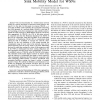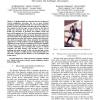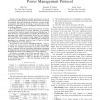468 search results - page 91 / 94 » Energy Model for H2S Monitoring Wireless Sensor Network |
SIGMETRICS
2008
ACM
13 years 7 months ago
2008
ACM
Time synchronization is an essential service in distributed computing and control systems. It is used to enable tasks such as synchronized data sampling and accurate time-offlight...
ICCCN
2008
IEEE
14 years 1 months ago
2008
IEEE
—The core functionality of a wireless sensor network (WSN) is to detect deviations in expected normal behavior and report it to the sink. In this paper, we propose TRACK — a no...
DATE
2009
IEEE
14 years 2 months ago
2009
IEEE
— Exploding health care demands and costs of aging and stressed populations necessitate the use of more in-home monitoring and personalized health care. Electronics hold great pr...
EWSN
2009
Springer
14 years 8 months ago
2009
Springer
Abstract. In their EWSN'07 paper [1], Giusti et al. proposed a decentralized wake-up scattering algorithm for temporally spreading the intervals in which the nodes of a wirele...
ICNP
2006
IEEE
14 years 1 months ago
2006
IEEE
— Energy efficiency is widely understood to be one of the dominant considerations for Wireless Sensor Networks. Based on historical data and technology trends, the receiver ener...



